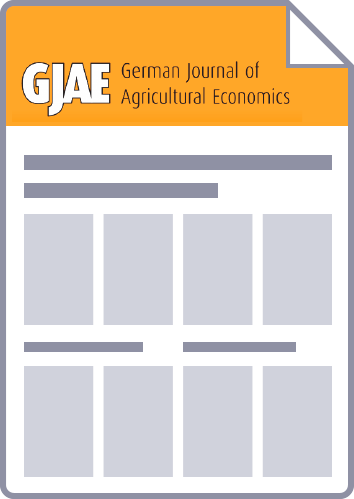Governmental sales promotion for agricultural products and food is of substantial importance in Germany. The origin in the respective federal state is emphasized as a quality attribute in sales promotion financed by the federal states and the origin in Germany is emphasized in sales promotion on the national level, as undertaken in Germany by the Central Marketing Agency (CMA). Public sales promotion for quality marks granted from federal authorities or the CMA establishes a connection between origin and quality. The European Commission regards this type of governmental sales promotion as an inadmissible intervention into single market actions because products of other European countries get discriminated and consumers get deceived. Based on this standpoint the European Commission put forward a claim against the CMA quality mark at the European Court. The paper presented here deals with the conflict of the legitimacy of governmentally run sales promotion and the underlying conflict between the German and the European legal system. The conflict between those two legal systems is reconstructed and analyzed by referring to the difference between a qualified and a combined geographical designation of origin. The traditional German law system does not differ between both designations and protects both in the same way. On the European level the qualified geographical designation is exclusively protected by the regulation (EWG) Nr. 2081/92. The combined geographical designation is regarded as inadmissible by the European Commission and therefore does not need a specific legal protection and therefore definitely no governmental sales promotion. Three aspects of geographical designations of origin will be presented as the geographical designation of origin will be discussed as a standard of communication, as a collective brand and as a quality signal. A designation of origin can establish itself as a standard of communication on the market only if a third party controls the credibility of the geographical claim. This is taken care of in the protection of the consumer against deception. Such a legal protection is needed for establishing the geographical designations of origin on the market as evolutionary stable standards of communication. If some additional quality claims are linked to the geographical designations of origin, a legal protection as a brand seems appropriate. The regulation (EWG) Nr. 2081/92 excludes combined designations of origin from the legal protection in Community law. This regulation regards the producers in the respective geographical region as responsible for formulating quality standards which are documented by submitting these quality specifications to a kind of register. It is positive that the quality standards are not set by the legal system but by the producers themselves. But on the other side, the regulation (EWG) Nr. 2081/92 has the other very important shortcoming that the degree of protection is much higher than demanded by the aim to prevent consumer deception. It is the stated goal of this regulation to support agricultural producers by establishing a much higher degree of legal protection for the designations of origin than for other designations and brand names. In this article is recommended to reduce the exceptional high legal protection of agricultural and food products with geographical designations to a "normal" level as valid for other brand names. Furthermore, it is suggested not to make a distinction between the qualified and the combined designation of origin in legal protection.



